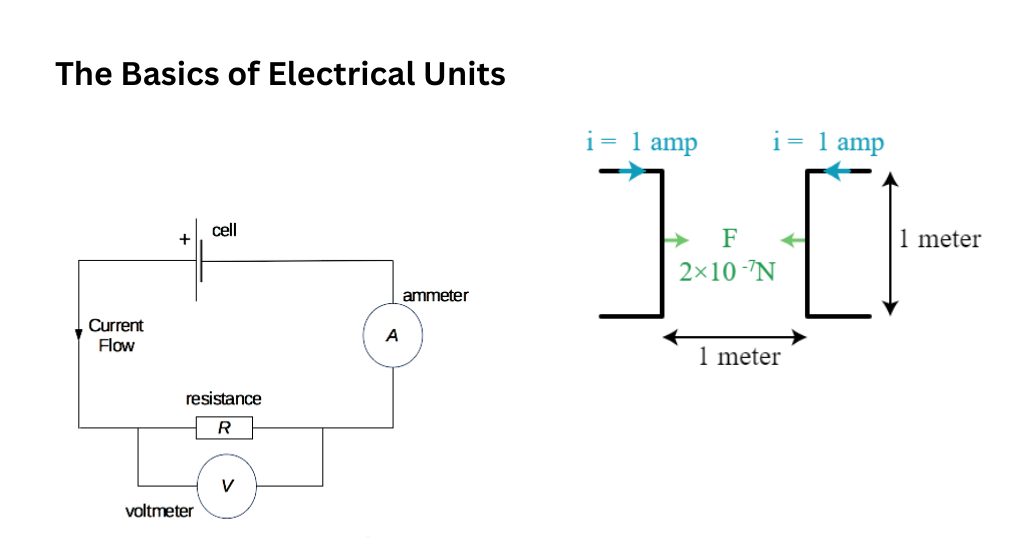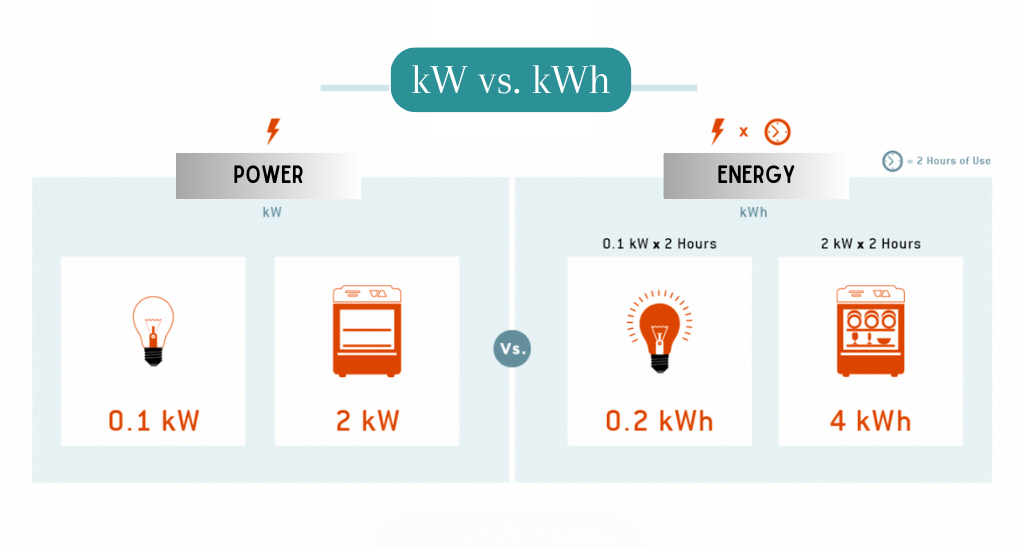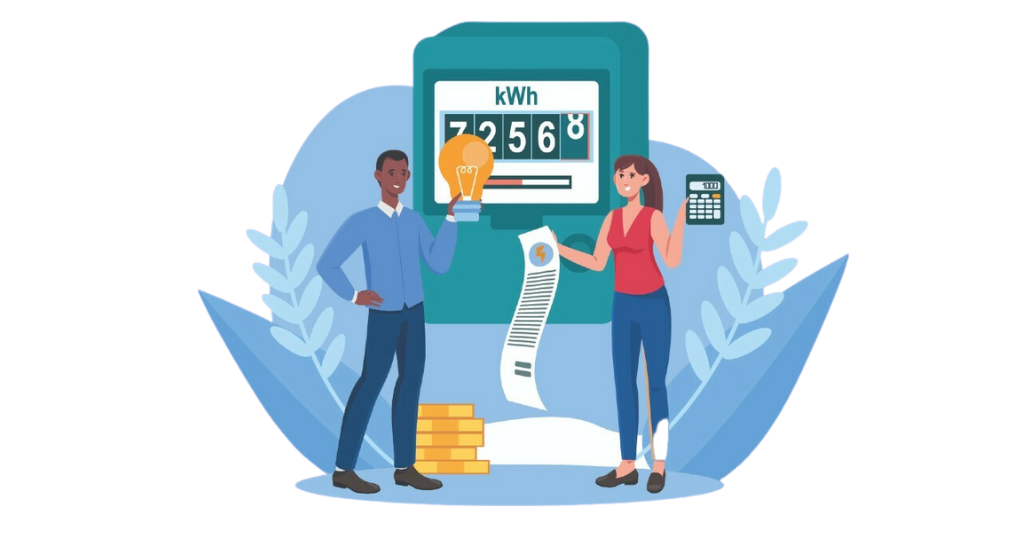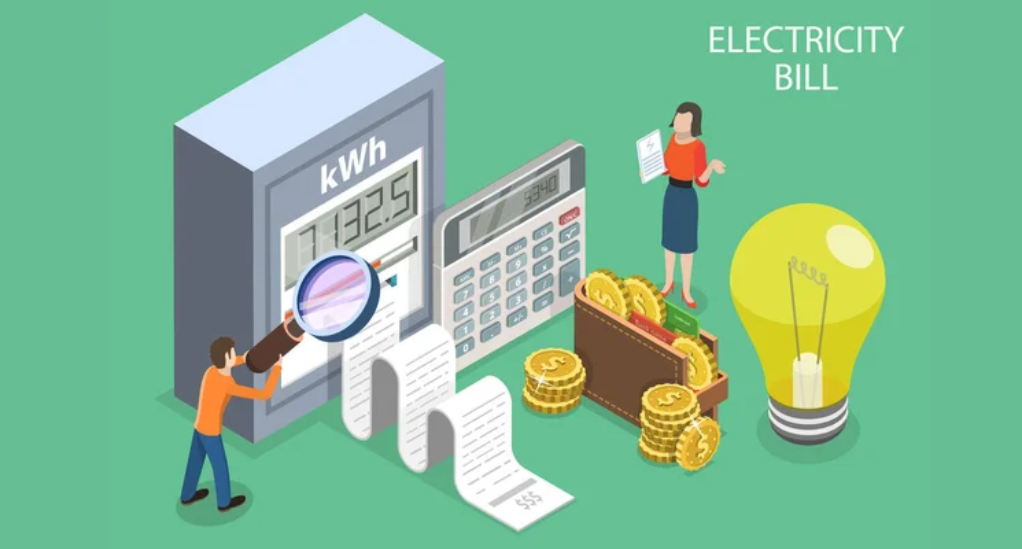In today’s world, where almost every aspect of our lives is powered by electricity, understanding the nuances of your electricity bill is more important than ever. It’s not just about the numbers that reflect your monthly charges; it’s about comprehending the units that govern the world of electricity – from watts to kilowatts and even kilowatt-hours. This knowledge not only empowers you to decipher your electricity bill with ease but also enables you to make informed decisions about your energy consumption.
Before we delve deeper, let’s familiarize ourselves with some of the key terms that will be recurrent throughout this guide:
- Watt (W): A unit of power that denotes the rate of energy transfer or conversion. It’s named after James Watt, a prominent figure in the development of steam engines.
- Kilowatt (KW): Equivalent to one thousand watts, kilowatts are used to express higher levels of power consumption, typically seen in household appliances and industrial machinery.
- Kilowatt-Hour (kWh): A unit of energy that represents the amount of electricity consumed over a period of time. It is commonly used by utility companies to bill customers.
| Unit | Equivalent to | Used to Measure |
|---|---|---|
| Watt (W) | 1 Joule/second | Small appliances like light bulbs |
| Kilowatt (KW) | 1000 Watts | Larger appliances and small industrial machines |
| Megawatt (MW) | 1000 Kilowatts | Large industrial machines and power plants |
As we venture further, we will explore the journey from watts to kilowatts, demystifying the complex terminology and breaking it down into simpler, comprehensible concepts. We will guide you step by step, ensuring a gradual and thorough understanding of how these units interconnect and influence your electricity bill.
The Basics of Electrical Units
In the realm of electricity, understanding the basic units is akin to learning the alphabets before diving into the literature. It forms the foundation upon which we can build a comprehensive understanding of how electricity is measured, utilized, and billed. In this section, we will unravel the mysteries of electrical units, starting from the very basic unit – the watt, and gradually scaling up to kilowatts. Let’s take a step-by-step journey into this fascinating world.

What is Watts: The Foundation of Electrical Measurement
To begin with, let’s answer the fundamental question: “What is watts?” A watt, denoted as ‘W’, is a unit of power that signifies the rate at which energy is transferred or consumed. In simpler terms, it measures how fast an electrical device can convert electrical energy into light, heat, or mechanical energy. It is defined as one joule of energy transferred or consumed per second.
| Appliance | Average Power Rating (in Watts) |
|---|---|
| LED Light Bulb | 9-12 W |
| Laptop | 50-100 W |
| Microwave Oven | 600-1200 W |
This table showcases the power ratings of some common household appliances, helping you visualize how watts translate into daily energy consumption.
From W to KW: Scaling Up the Units
As we move to larger appliances and machinery, using watts as a unit of measurement becomes impractical due to the large numbers involved. This is where kilowatts (KW) come into play. A kilowatt is equal to 1000 watts, making it a more convenient unit for expressing higher levels of power consumption. The conversion from watts to kilowatts (W to KW) is quite straightforward, as illustrated below:
1 KW=1000W
| Power in Watts | Power in Kilowatts |
|---|---|
| 1000 W | 1 KW |
| 5000 W | 5 KW |
| 10000 W | 10 KW |
This table serves as a quick reference guide for converting power from watts to kilowatts, a skill that will be handy when analyzing the power ratings of various appliances.
How Many Watts are in a Kilowatt: A Simple Conversion Guide
Now that we understand the relationship between watts and kilowatts, let’s delve deeper into the conversion aspect. The question “how many watts are in a kilowatt?” finds its answer in the simple conversion factor of 1000. To convert kilowatts to watts (KW to W), you would multiply the number of kilowatts by 1000, as demonstrated below:
1 KW=1000W
| Power in Kilowatts | Power in Watts |
|---|---|
| 1 KW | 1000 W |
| 5 KW | 5000 W |
| 10 KW | 10000 W |
This table facilitates a seamless conversion from kilowatts to watts, a necessary skill when calculating the energy consumption of larger appliances or even small industrial setups.
Kilowatt-Hours: The Unit of Electrical Energy
As we venture further into the intricacies of electrical units, it’s time to introduce a unit that plays a significant role in determining your electricity bill – the kilowatt-hour (kWh). This unit, while closely related to watts and kilowatts, represents the amount of energy consumed over a period of time. In this section, we will dissect the concept of kilowatt-hours, illustrating its importance in daily energy consumption and billing.
What Makes Kilowatt-Hours Different from Kilowatts
Before we delve into the calculations, let’s understand what sets kilowatt-hours apart from kilowatts. While kilowatts measure the rate of power consumption, kilowatt-hours quantify the total energy consumed over a period of time. It essentially answers the question: “How much energy is consumed when an appliance of a certain power rating operates for a specific duration?”
To illustrate this, consider a 100 W light bulb. If it operates for 10 hours, it consumes 1 kWh of energy (100 W x 10 hours = 1000 Wh or 1 kWh).

How to Calculate Your Appliance’s Energy Consumption
Calculating the energy consumption of your appliances is a straightforward process, involving the multiplication of the power rating (in kW) by the time of operation (in hours). The formula is as follows:
Energy Consumption (kWh)=Power Rating (KW)×Time (hours)Energy Consumption (kWh)=Power Rating (KW)×Time (hours)
| Appliance | Power Rating (KW) | Time of Operation (hours) | Energy Consumption (kWh) |
|---|---|---|---|
| LED Light Bulb | 0.01 KW | 10 | 0.1 kWh |
| Washing Machine | 0.5 KW | 2 | 1 kWh |
| Air Conditioner | 2 KW | 2 | 4 kWh |
This table illustrates the energy consumption of various appliances, helping you to estimate their impact on your electricity bill.
Tips for Reducing Your Kilowatt-Hour Usage
Understanding kilowatt-hours not only helps in deciphering your electricity bill but also empowers you to reduce your energy consumption. Here are some tips to help you minimize your kilowatt-hour usage:
- Utilize Energy-Efficient Appliances: Choose appliances with lower power ratings to reduce energy consumption.
- Mindful Usage of Appliances: Operate appliances like air conditioners and heaters for shorter durations to conserve energy.
- Regular Maintenance: Ensure regular maintenance of appliances to enhance their efficiency and reduce energy wastage.
Deciphering Your Electricity Bill
Understanding your electricity bill is not just about knowing the total amount due; it’s about dissecting the various components that contribute to the final figure. In this section, we will guide you through the process of analyzing your electricity bill, helping you to identify areas where you can potentially save energy and reduce costs.
How Electricity Consumption is Billed
Electricity consumption is typically billed based on the number of kilowatt-hours (kWh) consumed during a billing cycle. The utility company multiplies the number of kWh consumed by the rate per kWh to calculate the total charge. Let’s break down the components of an electricity bill to understand it better:
- Energy Charge: This is the cost of the electricity you have consumed, calculated based on the rate per kWh.
- Fixed Charge: A constant charge that covers the cost of maintaining the electrical infrastructure.
- Taxes and Levies: Additional charges that include government taxes and other levies.
| Component | Description | Amount ($) |
|---|---|---|
| Energy Charge | Cost of electricity consumed (500 kWh x $0.10) | $50.00 |
| Fixed Charge | Monthly maintenance fee | $20.00 |
| Taxes and Levies | Government taxes and other charges | $5.00 |
| Total | Total amount due | $75.00 |
This table provides a sample breakdown of an electricity bill, illustrating the different components that contribute to the total amount.
Understanding the Charges: Fixed and Variable Rates
Electricity rates can vary based on several factors, including the time of day, the season, and the energy provider. Understanding these variations can help you manage your energy consumption more effectively. Here, we discuss two types of rates:
- Fixed Rate: A constant rate per kWh, irrespective of the time of day or season.
- Variable Rate: A rate that fluctuates based on the demand for electricity, often higher during peak hours and lower during off-peak hours.
| Rate Type | Description | Pros and Cons |
|---|---|---|
| Fixed Rate | Constant rate per kWh | Predictable bills, potentially higher costs during off-peak hours |
| Variable Rate | Fluctuating rate based on demand | Lower costs during off-peak hours, unpredictable bills |
This table compares fixed and variable rates, helping you to understand their implications on your electricity bill.
Tips for Analyzing Your Monthly Electricity Bill
Analyzing your monthly electricity bill can provide insights into your energy consumption patterns and help identify opportunities for savings. Here are some tips to help you analyze your bill effectively:
- Track Your Consumption: Maintain a record of your monthly kWh consumption to identify trends and patterns.
- Understand the Rates: Familiarize yourself with the rate structure of your utility provider to identify potential savings opportunities.
- Seek Energy Audits: Consider requesting an energy audit from your utility provider to identify areas where you can reduce energy consumption.

Making Energy-Efficient Choices
In the modern world, where the call for sustainability is louder than ever, making energy-efficient choices is not just a personal preference but a global responsibility. In this section, we will guide you through the process of selecting energy-efficient appliances and making simple adjustments at home to reduce energy consumption, ultimately leading to a greener planet and a reduced electricity bill.
The Role of Appliance Wattage in Energy Efficiency
The first step towards making energy-efficient choices is understanding the role of appliance wattage in energy consumption. Appliances with higher wattage consume more energy, leading to higher electricity bills. Therefore, selecting appliances with lower wattage without compromising on performance is key to energy efficiency.
| Appliance | Average Wattage | Energy-Efficient Alternative | Average Wattage |
|---|---|---|---|
| Light Bulb | 60 W | LED Light Bulb | 9-12 W |
| Washing Machine | 500 W | Energy Star Certified Model | 400 W |
| Air Conditioner | 2000 W | Inverter Air Conditioner | 1500 W |
This table illustrates the wattage of common appliances and their energy-efficient alternatives, showcasing the potential for energy savings.
How to Choose Energy-Efficient Appliances
Choosing energy-efficient appliances is a crucial step in reducing your energy consumption. Here are some tips to help you make informed choices:
- Check Energy Star Ratings: Appliances with higher energy star ratings consume less energy.
- Consider the Size: Choose appliances that are the right size for your needs to avoid unnecessary energy consumption.
- Research and Reviews: Before purchasing, research and read reviews to find the most energy-efficient models.
Simple Home Adjustments to Reduce Energy Consumption
Apart from choosing energy-efficient appliances, making simple adjustments at home can significantly reduce energy consumption. Here are some tips:
- Utilize Natural Light: Maximize the use of natural light to reduce the need for artificial lighting.
- Insulate Your Home: Proper insulation can reduce the energy required for heating and cooling.
- Unplug Unused Appliances: Unplug appliances when not in use to prevent phantom energy consumption.
Conclusion
As we conclude this comprehensive guide, we hope that you are now equipped with the knowledge to make informed and energy-efficient choices. Understanding the intricacies of electrical units and your electricity bill is a step towards a sustainable future, where each one of us plays a role in conserving energy and protecting our planet.
Remember, every small step counts. By making energy-efficient choices, not only do you reduce your electricity bill, but you also contribute to a larger cause – a greener and more sustainable world.

